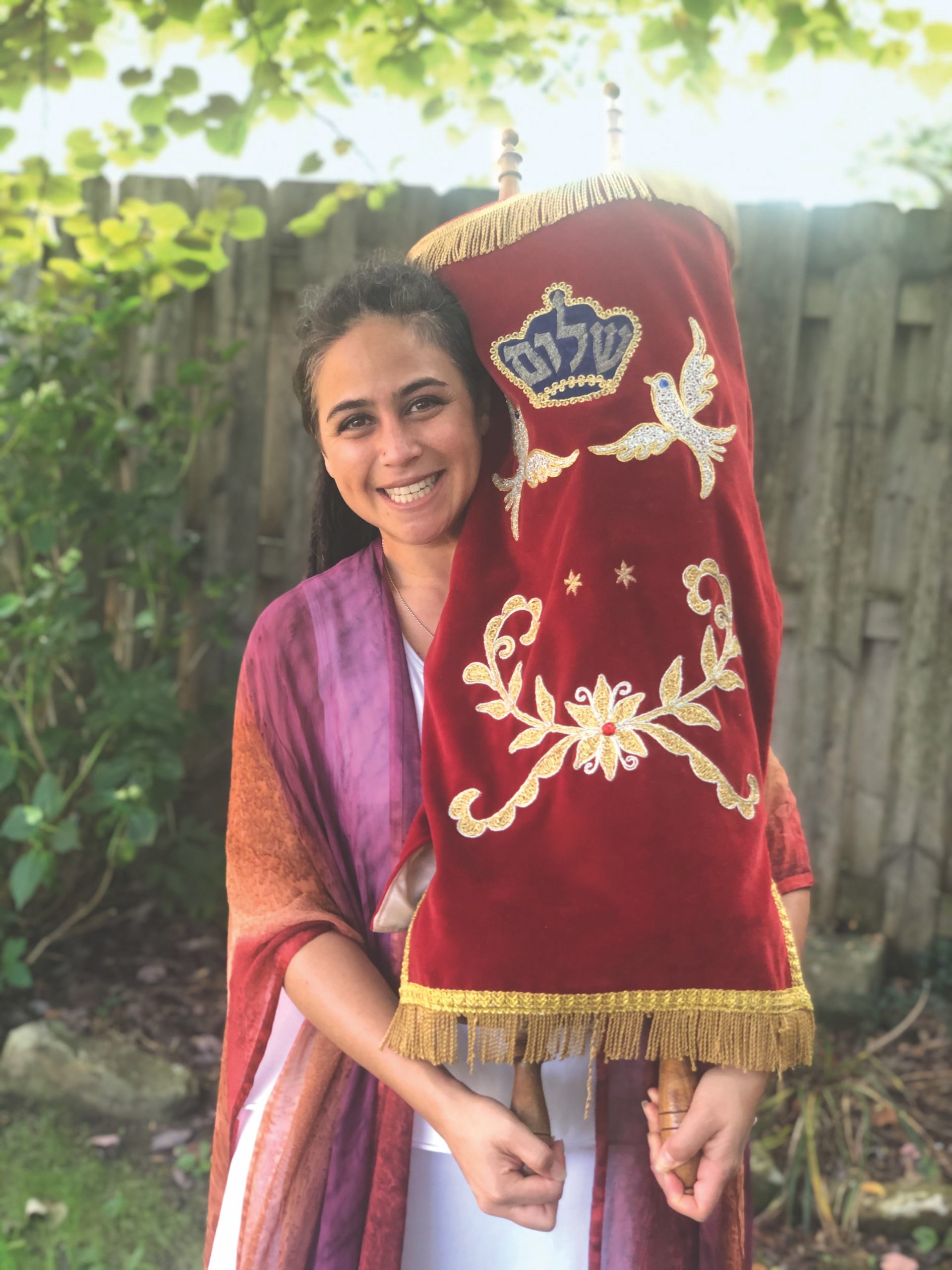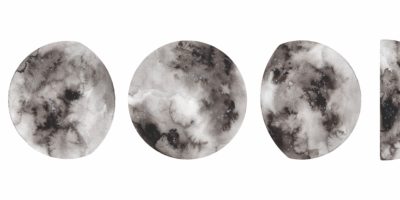
A Hebrew Priestess Reconnects with Her Roots
“In kindergarten, everyone was asked what they wanted to be when they grew up,” Keshira haLev Fife recalls of her childhood. “And I said I wanted to be a rabbi, even before I understood what it meant.”
She says she has always felt drawn to spiritual leadership, though she “tucked away” this innate yearning, even carrying it with her even when she went to live in Australia after graduate school. It was while recovering after a long illness that she found herself reflecting about her purpose, and what she was on this Earth to do that she hadn’t done. “What came to me repeatedly was this idea of being in service. I wasn’t quite sure what shape it would take,” she said.
In 2012, she began to explore a rabbinic path, but realized it wasn’t for her. Then she happened upon two people who recommended something called Kohenet, an embodied, Earth-based path of Jewish spiritual leadership for those of marginalized gender identities. As she read about Kohenet on their website, it became abundantly clear that this was what she needed to do. Her partner told her, “You were born for this.”
Growing up in Pittsburgh, Keshira always felt that there was something deeper than what she was being taught about both sides of her heritage. When she entered Filipinx spaces, all she heard around her was Tagalog or Chavacano, languages that she didn’t understand, and she saw people eating foods she was never given at home. “[Being Filipinx] was a part of me, but it didn’t claim me,” Keshira said of how she saw her identity growing up. “I had a distinct sense of not fitting in…I’d disengage and not even try to build friendships.”
Yet she also felt out of place as a Jewish person, mostly because her family was treated differently for looking different—and because of her maternal family’s Catholicism. As she grew older, she began to process how her Filipinx identity’s ties to Catholicism were the result of colonialism (The Philippines were colonized by Spain in 1521, then became a U.S. colony in 1898 until it gained independence in 1946). As a byproduct of her spiritual practice as a Kohenet, she started to wonder about Filipinx heritage before colonization. “And even after Spain colonized the Philippines in 1521, what were the things that folks held onto?” she wondered, “Healing modalities, cultural practices, sacred rituals… What happened to them? And can they be reclaimed?”
When she answered a clergy call at Standing Rock in 2016, these nagging questions crystalized. With some hesitation, since she was a guest, she told a young indigenous organizer there about a racist comment she’d overheard about “mail brides from the Philippines.” She expressed that she hadn’t spoken up against the comment because she felt that she was there as a guest and should be led by indigenous people. That leader responded, “you are an indigenous person too; you’re just not indigenous to here. You don’t have to let anybody disrespect you.”
This led her to realize that she had never felt she could claim the indigenous Filipinx part of herself that had been forgotten. “I don’t have knowledge in it, stories of it, family ritual items, etc. I don’t have things to tell stories about like I do Jewish ritual items,” she reflected. “Sadly, when my mom came to America seeking a better life, whether consciously or not, she let go of some of what she left behind in order to make room for a new identity.”
Fife had a similar desire to reclaim ancestral stories and spiritual practices on her Jewish side. Growing up, she attended Sunday School at the Tree of Life Synagogue in Pittsburgh, but she and her family were not deeply observant, nor attached to a specific denomination. Though she knew in Judaism there was an inherent encouragement of questioning, she also felt a certain dryness. Saying prayers sometimes felt like performing words, she says, and she wondered if there was more to Judaism than the heady, disembodied, intellectualist people-of-the-book brand she was exposed to. And her multiracial identity also meant she felt less than whole. “While nobody ever said this to me explicitly, the message was implicit,” she adds, “I had to downplay my other identities in order to fit in, and my acting ‘white’ was encouraged and rewarded. When other kids insisted that I could only be half Jewish because half of me was Asian, the only logical conclusion I could draw was to be less Asian and more Jewish so that I could be accepted.”
Her first Kohenet prayer encounter changed everything. She describes it as a total body experience unlike anything she’d known before. “The sounds of singing and drumming were loud and you could feel energy in the room,” she said. “The intensity and the vulnerability of the intensity made it impossible to hide any piece of myself, to leave part of myself at the door. I had to be fully in my body and present in order to metabolize the experience.”
The first time she had this all-consuming, transformative prayer experience, she was exhausted and in disbelief. Then she kept experiencing the same embodied, resonant and transformative sensation in subsequent prayers —she saw people laying their bellies to the Earth, intoning ancient Aramaic words, crying, and being in postures that allowed them to fully lift up the words of the Mourner’s Kaddish; she saw people praise in gratitude with their whole bodies.
Kohenet also allowed her to be with other marginalized people, particularly LGTBQ Jews, Jews of Color, Sephardi, Mizrahi (JoCSM) folks, disabled and fat folks, who were “reclaiming” their Judaism. In Kohenet activities, she joined people in exploring and reframing things that previously may have been taboo, such as carrying garlic in one’s pocket as protection (an Ashkenazi ritual). “Parts of myself that had been pushed to the side came back to me,” she said. “Kohenet is one of the only places where I didn’t feel different from everyone else, or disapproved of, and didn’t feel I had to explain myself or do things in a particular way.”
To Keshira, part of what makes Kohenet so compelling is people’s willingness to show up fully with their emotions, with all their juices flowing. Priestesses are ecstatic in prayer, deep in practice and belief with fierceness and devotion. Kohanot [pl.] reclaim what has been marginalized, erased and forgotten. So as she reclaims what her ancestors couldn’t hold onto, she is repairing the erasures caused by assimilation and oppression on both sides of her family. “As we are calling for our ancestors, I try to envision or connect with not just the ones whose names and faces I know, my beloved dead, but also the ones who came before,” she said.
For other people whose ancestral practice may have been forgotten, the work Fife does with Kohenet, such as crafting innovative Jewish rituals for holidays, milestones and “life Spiral” events, leading song and prayer, and mentoring future priestesses, helps them create new access points to Judaism. She says that by allowing ourselves to remember in ways beyond the cognitive, we remember, coming back to ourselves and becoming “ever more whole.” “It’s like when I hear a shofar and there’s a resonance in my bones,” she said. “I am remembering something that my mind can’t conjure but which my body knows deeply.”
Another of her favorite examples is the quintessentially Jewish story of escaping the narrow place and reaching collective liberation. Symbolized by rituals like the Passover Seder, and now the new rituals Hebrew priestesses are crafting, Fife says, “it reminds us that our liberation was collective then and that it will always be collective. When we were freed, we were freed in our wholeness; so may it continue to be.
Gen Xia Ye Slosberg is a writer and community organizer, and the Co-Creator & Producer of LUNAR: The Jewish-Asian Film Project.



